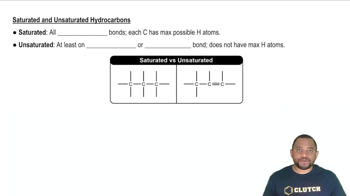Here are the essential concepts you must grasp in order to answer the question correctly.
Molarity
Molarity is a measure of concentration defined as the number of moles of solute per liter of solution. It is expressed in moles per liter (M). In this case, a 7.5 M solution of sodium acetate indicates that there are 7.5 moles of sodium acetate dissolved in every liter of solution, which is crucial for understanding the solution's saturation level.
Recommended video:
Solubility
Solubility refers to the maximum amount of solute that can dissolve in a given amount of solvent at a specific temperature. The graph provided shows how the solubility of sodium acetate increases with temperature, indicating that more solute can dissolve as the temperature rises. This relationship is essential for determining whether the solution is saturated, unsaturated, or supersaturated.
Recommended video:
Saturation Levels
Saturation levels describe the state of a solution in relation to its solute. A saturated solution contains the maximum amount of solute that can dissolve at a given temperature, while an unsaturated solution can still dissolve more solute. A supersaturated solution contains more solute than is typically soluble at that temperature, often achieved through specific conditions. Understanding these levels is key to answering the question about the sodium acetate solution.
Recommended video:
Saturated and Unsaturated Hydrocarbons






